Gardening in small spaces like balconies and patios offers immense joy, connecting you with nature right outside your door. However, it also comes with unique challenges, especially when autumn brings its characteristic heavy rains. One of the most common, and potentially uncomfortable, balcony gardening problems involves managing water as it drains from your potted plants. Picture this: a sudden downpour, and next thing you know, runoff from your beautifully arranged containers is dripping onto your downstairs neighbor’s patio or even into their living space. This is “The Downstairs Neighbor Dilemma,” and it is a common concern for urban gardeners. Preventing this issue protects your plants, your property, and your good neighborly relations.
Understanding container drainage is key to successful small-space gardening, particularly when contemplating fall rain protection. As a supportive and practical gardening coach, I am here to guide you through effective strategies to ensure your plants thrive without causing a nuisance. We will explore everything from choosing the right pots and soil to implementing clever collection systems, ensuring your gardening journey remains enjoyable and problem-free.
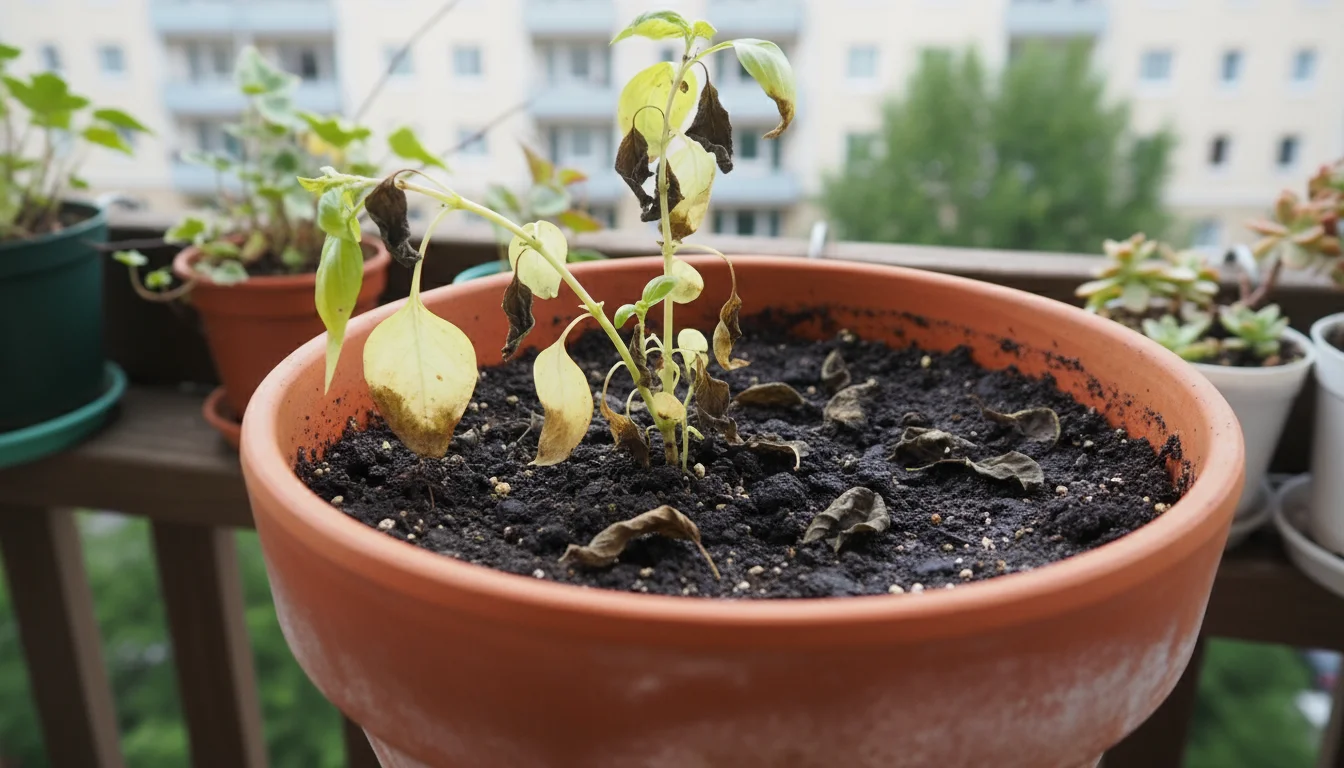
Understanding Container Drainage: Why it Matters for Your Plants and Neighbors
Good container drainage involves more than just drilling holes in the bottom of a pot. It describes how efficiently water moves through the soil and out of the container. For your plants, proper drainage is literally a lifesaver. Plant roots need oxygen to survive. If water sits in the bottom of a pot for too long, it displaces the air, suffocating the roots. This leads to a condition called root rot, which manifests as yellowing leaves, wilting, and eventually, plant death. Protecting them from this common pitfall ensures your efforts yield a lush, healthy garden.
Beyond plant health, effective drainage profoundly impacts your immediate environment and your relationships, especially when you have neighbors below. Imagine heavy rain filling your pots. Without proper management, excess water, often mixed with soil particles and nutrient runoff, cascades over the edge of your balcony or patio. This creates a mess for your downstairs neighbor, stains their outdoor furniture, or even causes water damage to their property. This highlights a significant balcony gardening problem, making drainage management about both horticulture and being a considerate community member, preventing unpleasant confrontations.
During fall, this challenge intensifies. Fall often brings more frequent and heavier rainfall compared to summer showers. Temperatures also drop, meaning water evaporates slower from pots. This combination makes effective fall rain protection critically important. Unprepared containers can waterlog plants and create runoff issues. Addressing this proactively protects your greenery and maintains peace with those below.
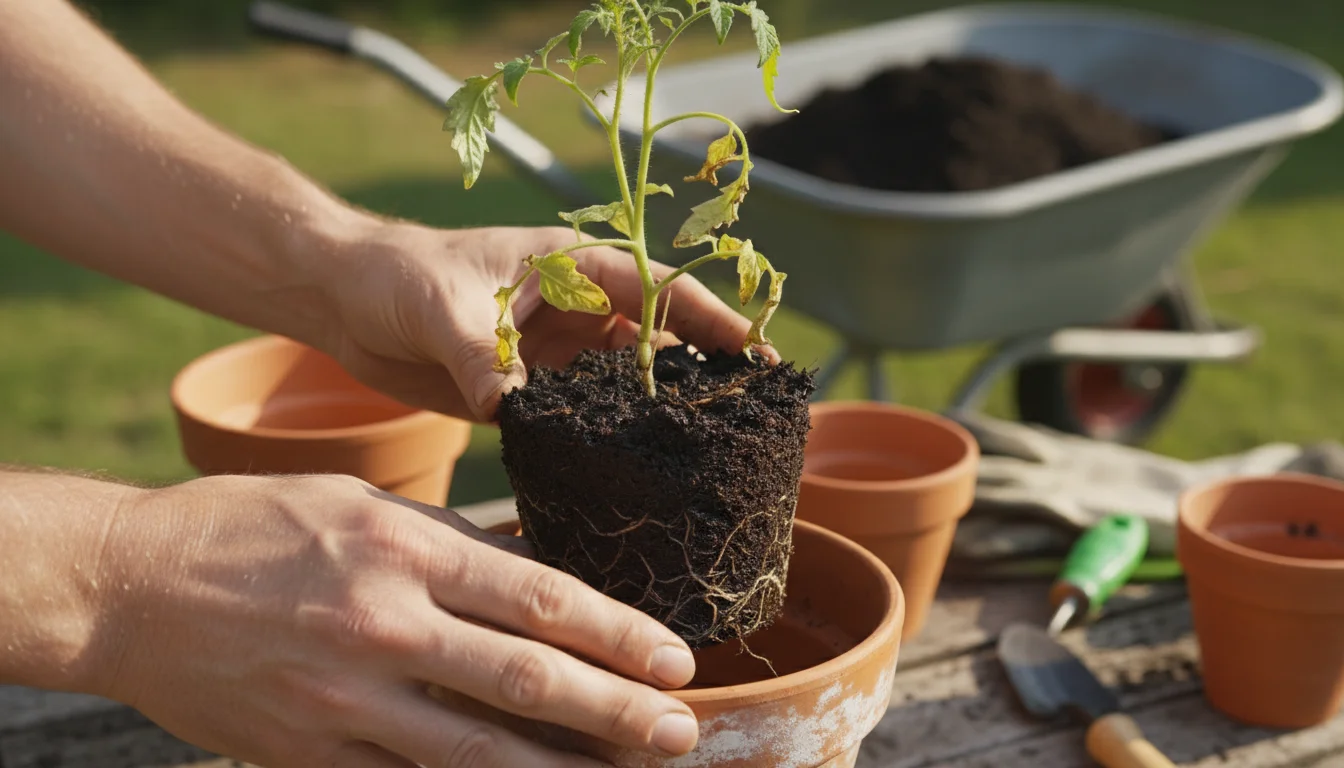
The Risks of Poor Drainage: For Your Plants and Your Property
Ignoring proper container drainage leads to multiple issues, impacting both your thriving plants and the structural integrity of your living space. For your beloved plants, consistent waterlogging quickly becomes a death sentence. When soil stays saturated, roots cannot access oxygen, leading to root rot. Symptoms appear as wilting even when the soil is wet, stunted growth, and discolored leaves, often turning yellow or brown. Once root rot takes hold, it is challenging to reverse, frequently requiring you to repot the plant or, in severe cases, discard it entirely. You invest time and care into your plants, so protecting them from this common pitfall ensures your efforts yield a lush, healthy garden.
The consequences extend beyond your pots. Uncontrolled water runoff from your balcony or patio can cause significant damage to the building structure and your neighbors’ property. Water leaking repeatedly over concrete or wood surfaces accelerates erosion and deterioration. Over time, constant moisture encourages mold and mildew growth, which poses health risks and causes unsightly stains. For your downstairs neighbors, this translates into drips on their windows, furniture, or even water penetration into their apartment, potentially damaging ceilings or personal belongings. Such instances turn gardening into a source of tension and costly repairs. Preventive measures protect your finances and preserve harmonious living.
Furthermore, mineral deposits from hard water or dissolved nutrients from fertilizers, carried by excess drainage, can leave unsightly white or colored stains on masonry, railings, and flooring. These stains are difficult to remove and detract from the aesthetic appeal of both your and your neighbor’s outdoor spaces. Preventing this requires thoughtful planning for your fall rain protection strategy, ensuring every drop of excess water has a designated path. Consider the long-term impact on paint, wood, and structural integrity. Effective drainage offers immediate peace of mind and long-term property protection.
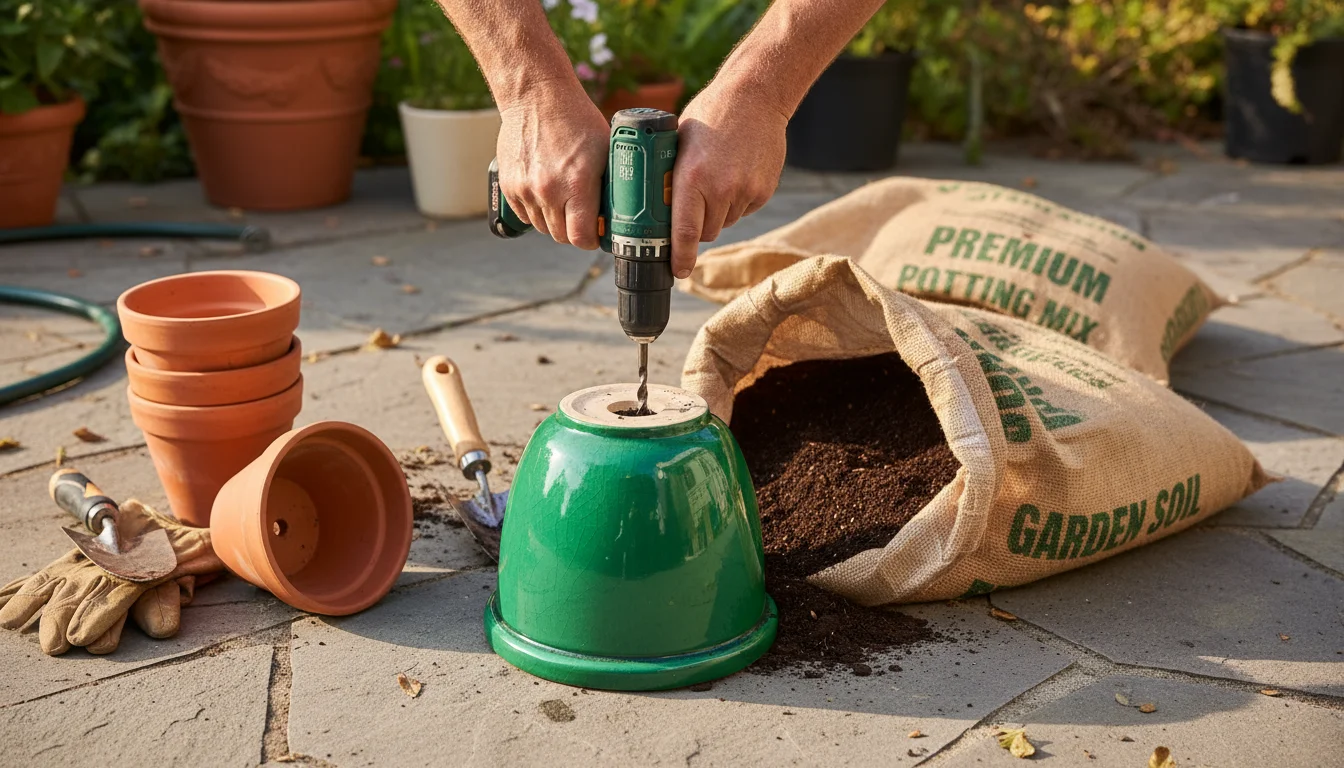
Proactive Pot and Soil Choices: The Foundation of Good Drainage
The journey to excellent container drainage begins before you even plant. Your choice of pot and potting mix forms the absolute foundation of preventing overflow and protecting your downstairs neighbor. You want containers that facilitate water movement, not hinder it. Always select pots with drainage holes at the bottom; if a decorative pot lacks them, drill several, typically 0.5 to 1 inch in diameter, or more for larger containers. Avoid using rocks or gravel at the bottom; this does not improve drainage and can lead to waterlogged soil above.
The right potting mix is equally crucial. Standard garden soil compacts too easily in containers, stifling roots and preventing water flow. Instead, opt for a high-quality, well-draining potting mix specifically formulated for containers. These mixes contain ingredients like perlite, vermiculite, and coco coir, which improve aeration and drainage, ensuring quick water movement and healthy root environments. A good mix feels light and fluffy, not dense and heavy. For plants needing sharper drainage, like succulents, amend your mix with additional perlite or grit. This proactive step reduces balcony gardening problems from soggy soil.
Consider container material: porous terracotta aids evaporation but dries faster. Plastic, glazed ceramic, and metal retain more moisture, so ensure ample drainage holes and careful watering. Regardless of the material, elevate your pots slightly off the ground to allow water to exit freely from the drainage holes. Pot feet, bricks, or even small blocks of wood work perfectly. This simple step prevents drainage holes from becoming clogged by direct contact with the balcony surface, a common cause of standing water during heavy fall rain protection efforts.
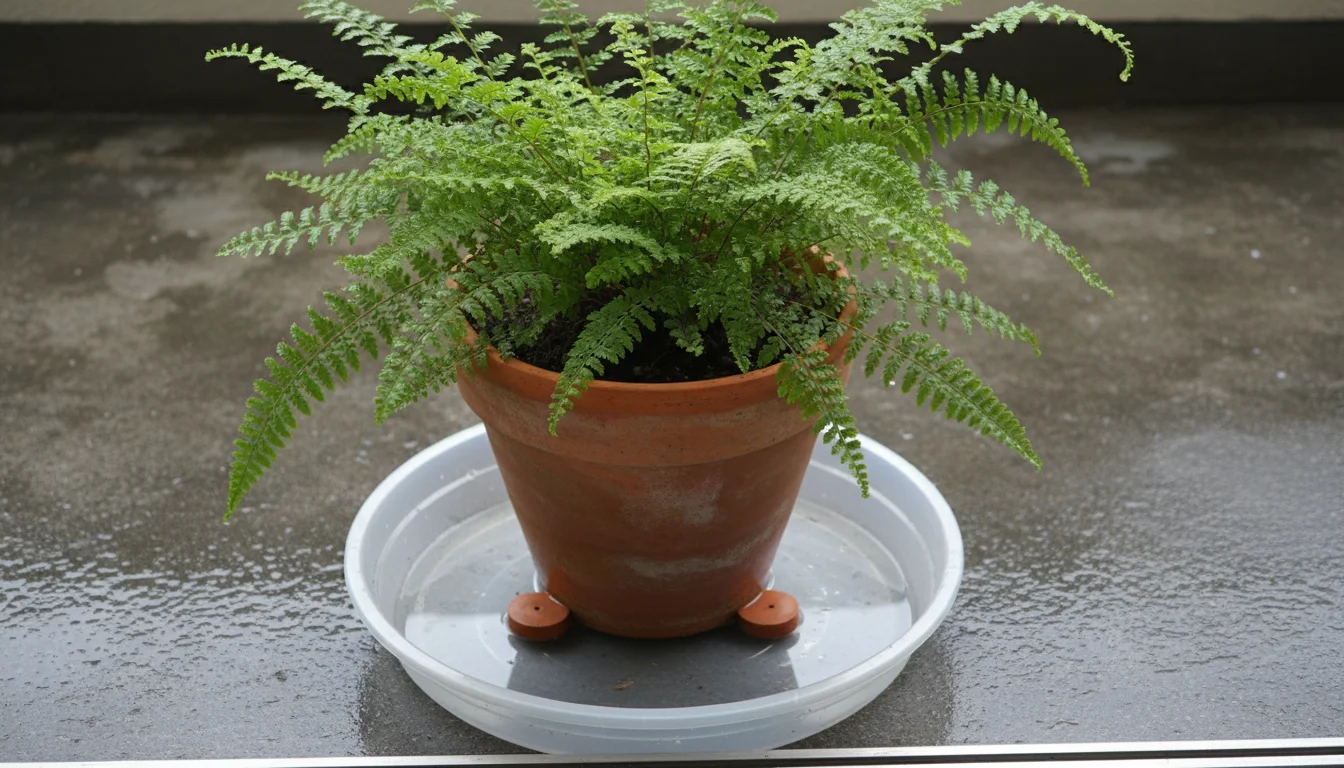
Clever Collection Systems: How to Stop Pots from Leaking on Balcony Below
Even with excellent pot and soil choices, heavy fall rain protection demands robust collection systems. Your primary goal is to contain all excess water, preventing any drips from reaching your downstairs neighbors. The most straightforward solution is using saucers or drip trays. Use large, deep saucers extending at least an inch beyond the pot’s base. Place small risers, like pot feet or stones, inside the saucer before placing your pot. This keeps the pot’s drainage holes elevated above any standing water, preventing roots from sitting in stagnant moisture and reabsorbing dirty water. Remember to empty these saucers regularly, especially after a heavy downpour, to avoid creating breeding grounds for mosquitoes or allowing water to overflow.
For multiple pots or a more integrated approach, arrange several smaller pots within a single larger tray. This centralizes water collection and simplifies emptying. These trays are durable, often plastic or galvanized metal, with raised edges. When selecting these, measure your space carefully to ensure a snug fit on your balcony. Tilt larger trays slightly towards one end, if possible, to pool water for easier emptying. This method effectively manages water from several plants simultaneously, significantly reducing the chance of unwanted leaks and making it clear how to stop pots from leaking on balcony below.
For areas expecting extremely heavy or prolonged rain, or if you prefer a more hands-off solution, explore passive drainage systems. These involve directing water into a larger container or a rain barrel if local regulations and space allow. One innovative approach involves creating a “drip zone.” Place a waterproof mat or tarp under your collection trays, especially if your balcony has textured or uneven surfaces. The mat serves as an additional layer of protection, guiding any errant drips into a designated basin or directing them towards a floor drain, if your balcony has one. This extra layer is useful during intense storms when saucers might overflow. Implementing these collection systems offers reliable fall rain protection, ensuring your gardening practices remain clean and considerate.
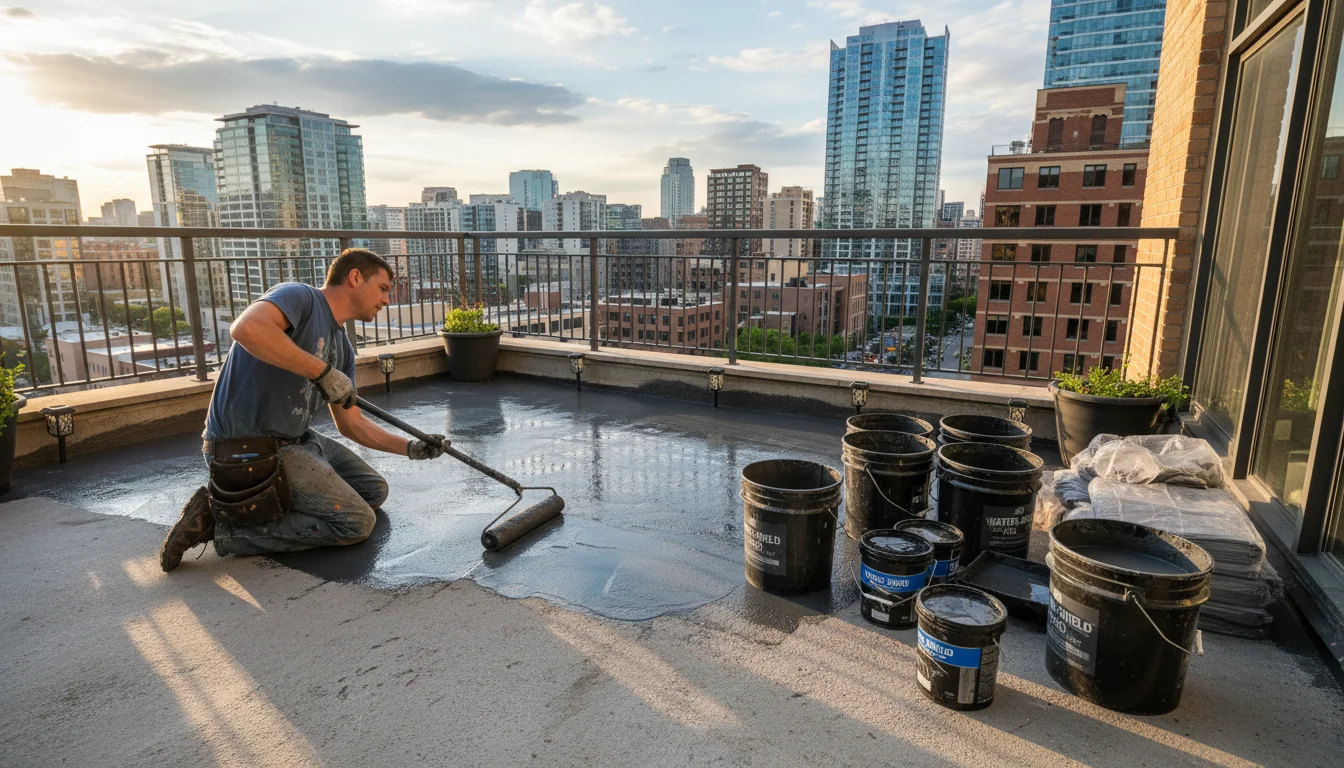
Balcony Waterproofing Strategies: Protecting Your Structure and Relationships
While effective container drainage prevents direct drips, prolonged exposure to moisture, even from well-managed pots, can still impact your balcony surface. Proactive balcony waterproofing for plants offers an additional layer of protection, safeguarding your property and maintaining a good relationship with your downstairs neighbors. Install a waterproof membrane or coating, like DIY liquid rubber or polyurethane, on your balcony floor, especially where gardening. These solutions create a seamless barrier, preventing water from soaking into concrete or wood, extending surface life, and preventing stains or structural damage.
Before applying any waterproofing material, clean the balcony surface thoroughly. Remove all dirt, grime, and loose debris. For concrete, use a pressure washer; for wood, sand lightly. Ensure the surface dries completely before application. Follow the manufacturer’s instructions precisely for application, which usually involves multiple coats and specific curing times. This process offers a robust barrier against moisture, especially crucial during periods of heavy fall rain protection. Consider extending the coating a few inches up any walls or railings if possible, creating a shallow basin effect for added protection.
If permanent waterproofing is not an option due to rental agreements or cost, consider temporary yet effective solutions. Heavy-duty rubber or PVC mats provide a localized waterproof barrier under your potted plants and drainage collection systems. These mats are durable, easy to clean, and offer excellent protection against spills and drips. Choose mats with raised edges to contain any overflow. Arrange your pots and trays on these mats, creating a dedicated “wet zone” where any moisture is contained. While not permanent, it significantly reduces direct water exposure, mitigating damage and addressing concerns about how to stop pots from leaking on balcony below. Always check your lease agreement for any restrictions on permanent modifications or specific types of materials you can use on your balcony.
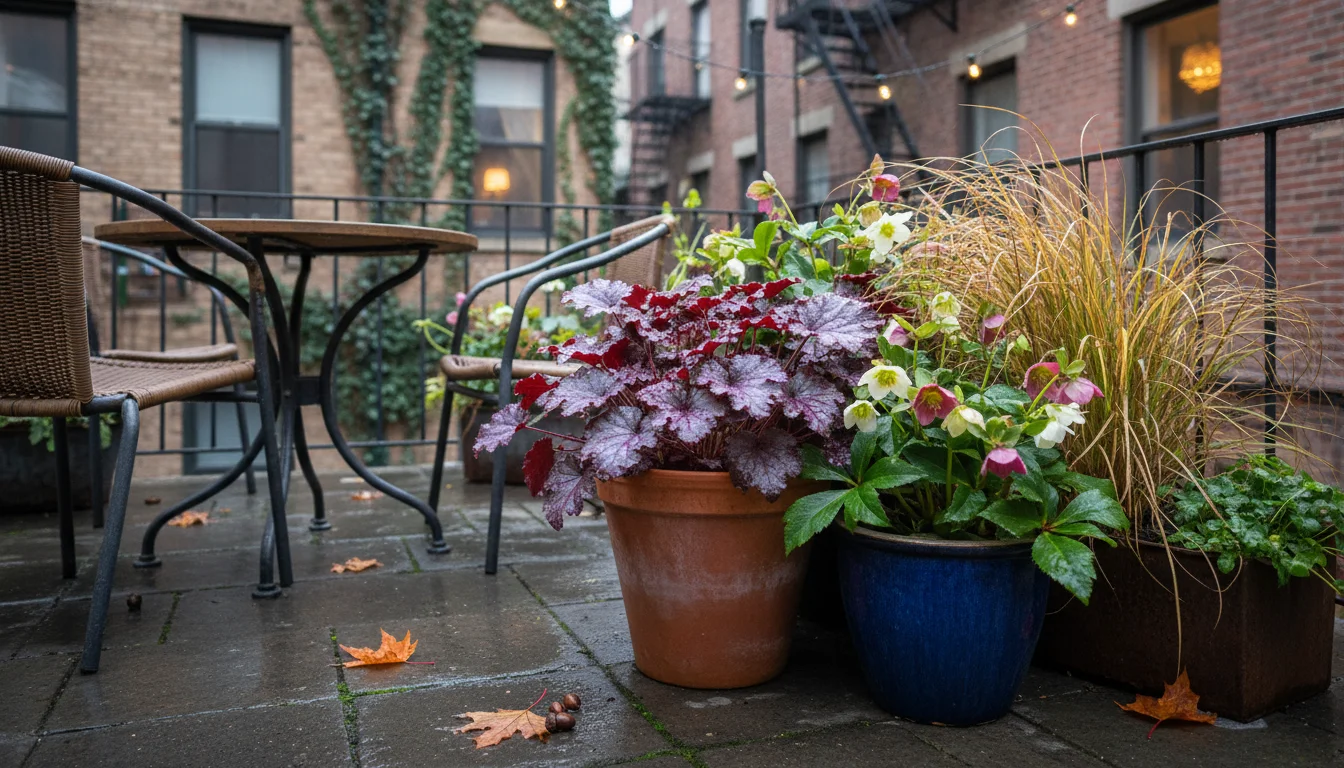
Plant Selection for Rainy Climates: Thriving in the Fall
Your plant choices also play a role in managing container drainage, especially in a rainy fall. While proper drainage is essential for almost all plants, some varieties inherently handle excess moisture better than others. When planning your fall container garden, incorporate plants naturally more resilient to damp conditions or those that tolerate a bit more moisture at their roots. This reduces the overall burden on your drainage systems and provides a buffer against occasional overwatering or prolonged rainy spells. Think about plants native to regions with similar climate patterns, as they often exhibit greater natural resistance to excessive moisture.
Here are some excellent choices for fall container gardening in rainy climates:
- Cool-Season Annuals: Pansies, violas, ornamental cabbage and kale, and snapdragons thrive in cooler, moist conditions and generally do not mind consistent soil moisture as long as drainage is still adequate. Their vibrant colors brighten up dreary fall days.
- Heuchera (Coral Bells): These perennials offer stunning foliage and tolerate moist, well-draining soil, providing year-round interest.
- Ferns: Many ferns, like autumn fern or marginal wood fern, thrive in humidity and moist soil, adding lush texture.
- Evergreen Shrubs: Dwarf conifers, boxwood, and some hollies offer adaptable, consistent greenery and structure.
- Sedum (Stonecrop): While many sedums prefer drier conditions, upright varieties like ‘Autumn Joy’ tolerate moisture and offer late-season blooms.
Conversely, avoid plants known to be extremely sensitive to wet feet, such as many succulents (unless very carefully managed), lavender, and rosemary, which prefer dry soil. If you adore these plants, place them in their own dedicated pots with exceptionally sharp drainage and consider moving them to a sheltered location during prolonged downpours as part of your comprehensive fall rain protection strategy. Selecting appropriate plants simplifies your watering routine and minimizes the stress on your drainage collection systems, contributing to a more carefree and successful balcony gardening experience.
Seasonal Maintenance for Fall Rains: What to Do with Potted Plants When it Rains a Lot
Fall rains demand a shift in your gardening routine to ensure your container plants remain healthy and your balcony remains neighbor-friendly. Understanding what to do with potted plants when it rains a lot becomes paramount. One of the most crucial adjustments is to reduce your watering frequency significantly. As temperatures drop and daylight hours shorten, plants naturally slow their growth and require less water. Relying solely on rainfall during this period can quickly lead to overwatering, especially for plants not explicitly adapted to constantly wet conditions. Always check the soil moisture level with your finger before adding any water; if the top inch or two feels damp, hold off.
Regularly inspect and empty your saucers and collection trays. During periods of heavy, continuous rain, water can accumulate faster than it evaporates. Stagnant water not only poses a risk of re-saturating your pot’s soil but also attracts mosquitoes, a nuisance for you and your neighbors. Make it a daily habit to check these collection points and dispose of any standing water. If possible, tilt larger trays to assist drainage into a designated bucket or a storm drain (if permitted). Diligently emptying trays is a primary step in how to stop pots from leaking on balcony below during intense weather.
Consider temporary relocation or protection for sensitive plants. If you have plants particularly susceptible to root rot or simply do not enjoy prolonged wetness, move them to a more sheltered spot on your balcony, perhaps closer to the building wall or under an overhang. For especially valuable or delicate plants, temporarily bringing them indoors to a bright location during extended periods of heavy rain is a viable option. You can also construct simple DIY shelters using clear plastic sheeting draped over stakes or tomato cages, creating a mini-greenhouse effect that deflects direct rain while still allowing light. This hands-on approach ensures even your finicky plants endure the season.
Finally, avoid fertilizing your container plants during periods of heavy rain or cooler fall temperatures. Plants absorb fewer nutrients when not actively growing, and excess fertilizer salts can build up in the soil, leading to root damage. Furthermore, heavy rains can wash away recently applied fertilizers, polluting runoff and negating your efforts. Focus instead on maintaining healthy soil structure and ensuring excellent container drainage. These seasonal adjustments safeguard your plants, maintain cleanliness, and demonstrate responsible balcony gardening.
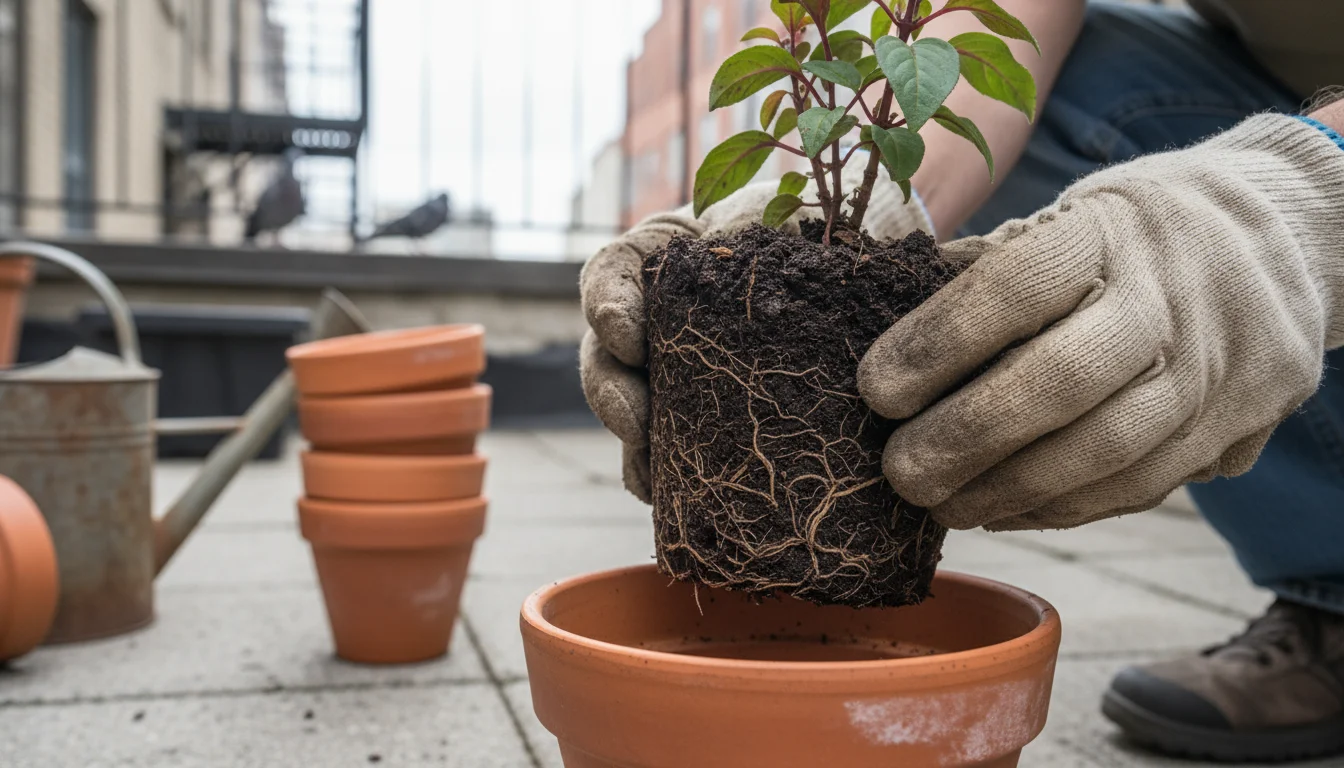
Common Mistakes and Troubleshooting: Learning from Experience
Even the most diligent gardener encounters challenges. Understanding common pitfalls and knowing how to troubleshoot them will save your plants and prevent potential conflicts with neighbors. One frequent mistake is assuming all pots provide adequate drainage. Many decorative containers lack sufficient drainage holes or have them in inconvenient locations. Always inspect new pots for drainage holes and add more if necessary. Another common error is using garden soil instead of potting mix. Garden soil compacts, reducing aeration and severely impairing container drainage, leading to waterlogged roots. Always use a high-quality, lightweight potting mix designed for containers.
Ignoring overflow from saucers is another common problem. While saucers catch water, they can quickly fill and overflow during heavy rains or if left unemptied. Regularly check your saucers and trays. If you find them overflowing repeatedly, you might need deeper saucers, larger collection trays, or more frequent emptying. If water collects around the base of the pot despite drainage holes and saucers, ensure the pot is elevated. Drainage holes flush against a flat surface cannot function effectively, leading to trapped water and potential root issues. Use pot feet or risers to lift your containers slightly, allowing air circulation and free water escape.
If you observe signs of plant distress like wilting, yellowing leaves, or stunted growth, check the soil moisture. If it feels consistently wet, you likely have a drainage problem. Gently remove the plant from its pot to inspect the roots. Healthy roots are usually white or tan and firm; rotting roots appear dark and mushy. If root rot is evident, prune away the affected roots, repot the plant in fresh, well-draining potting mix, and ensure your drainage setup is optimized. This might involve adding perlite or using a larger collection system. Addressing issues promptly refines your fall rain protection strategy and keeps plants thriving. Troubleshooting provides valuable learning, making you a skilled gardener.
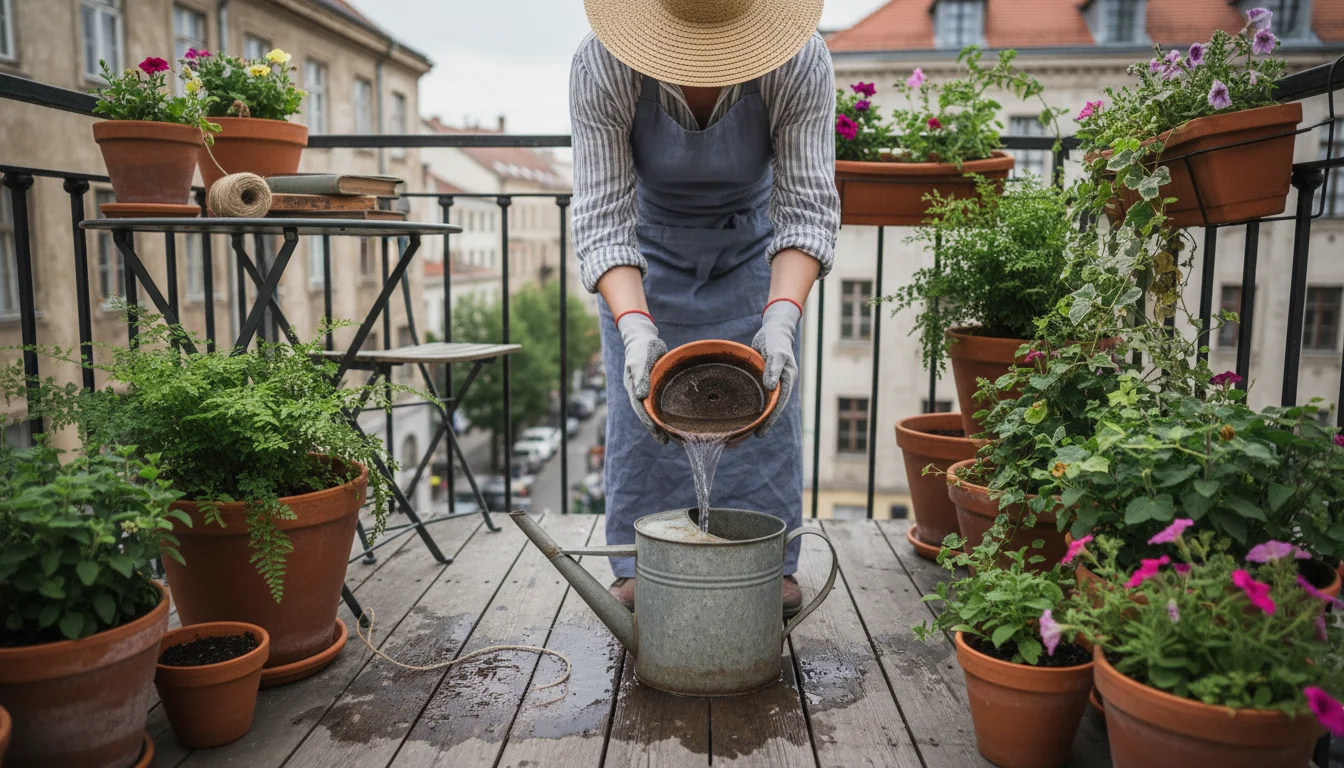
Eco-Friendly Drainage Solutions: Harnessing Rainwater
As gardeners, we often look for ways to minimize our environmental footprint. Managing container drainage offers several opportunities for sustainable practices, especially when it comes to rainwater. Instead of simply discarding the water collected from your saucers and trays, consider repurposing it. Rainwater is naturally soft and free of chlorine and other chemicals often found in tap water, making it excellent for plants. Collecting this runoff not only solves the balcony gardening problems of dripping water but also provides a valuable resource for your garden.
Collect water from saucers and trays in a watering can or bucket to use for other plants. Rainwater is excellent for plants, minimizing waste. For larger scale, consider a small rain barrel or connected collection bins, if allowed, to capture rainwater from your systems or downspouts. Always ensure any rain collection system is covered to prevent mosquito breeding. Filtering systems can also be integrated to remove any soil particles or debris before storage.
Another eco-friendly practice involves optimizing your soil. Enriching your potting mix with compost improves soil structure, enhancing its ability to retain beneficial moisture while still draining excess water effectively. A healthy soil microbiome also helps break down organic matter, improving overall soil health. Regularly amending your soil with compost or worm castings provides nutrients naturally and supports robust root growth, making plants more resilient to varied watering conditions. When repotting, reuse old potting mix by refreshing it with new compost and perlite, rather than discarding it. This circular approach minimizes waste and maximizes resources.
Finally, choose durable, reusable pots and drainage solutions like high-quality plastic, ceramic, or metal saucers. This reduces plastic waste and ensures sustainable fall rain protection year after year. By integrating these eco-conscious practices, you transform a potential problem into an opportunity for responsible and rewarding gardening, contributing positively to your environment and community.
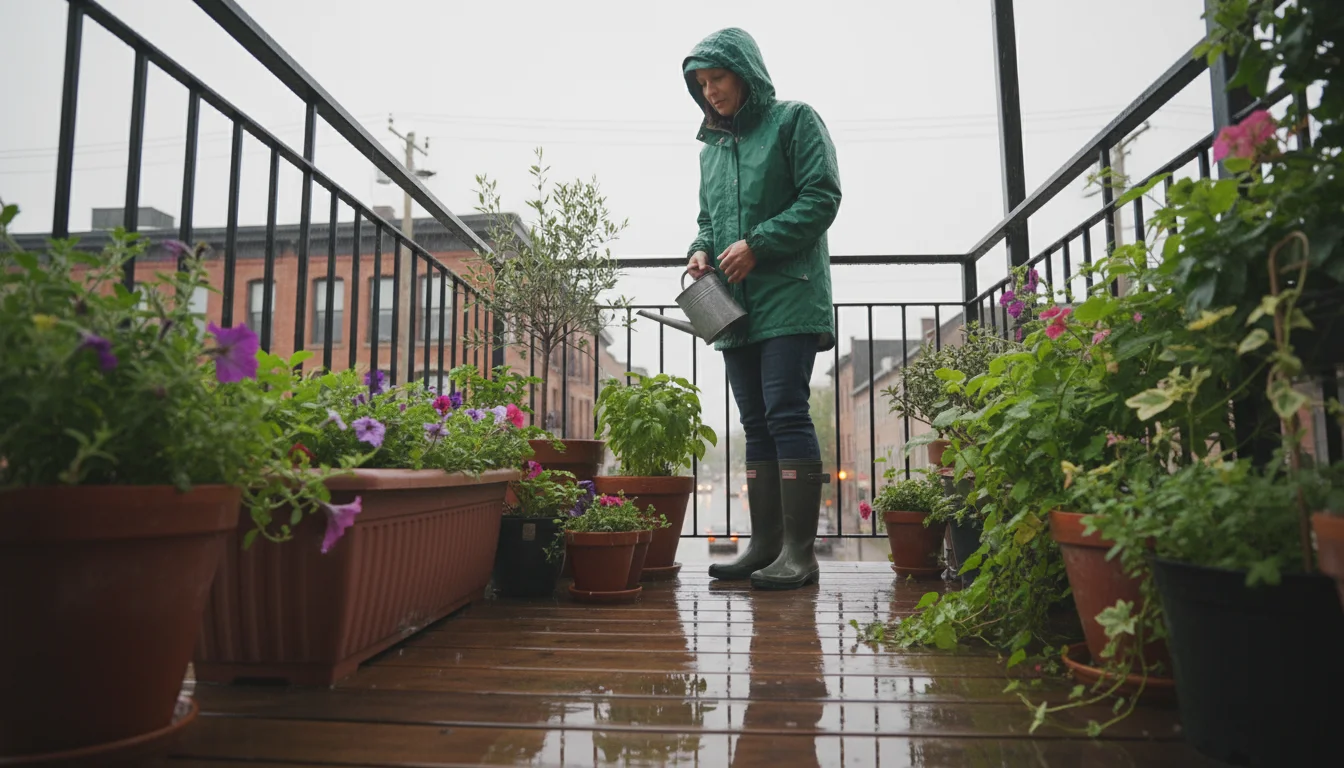
Frequently Asked Questions
Do I really need drainage holes in my pots?
Yes, drainage holes are critical. Without them, water accumulates, suffocating roots and causing root rot. Heavy rain quickly over-saturates pots lacking drainage, causing irreparable damage. Always ensure pots have adequate drainage.
What are pot feet and why should I use them?
Pot feet are small risers, typically terracotta or plastic, placed under pots. They elevate the pot, allowing air to circulate and water to exit freely from drainage holes. This prevents waterlogging and improves air circulation, effectively improving container drainage.
Can I use a single large tray for multiple pots?
Yes, using a single large, shallow tray for multiple smaller pots centralizes water collection, making runoff easier to manage. Ensure the tray is sturdy, has raised edges, and you empty it regularly to prevent overflow and mosquitoes.
How can I make my balcony more waterproof for plants without major renovation?
For non-permanent solutions, use heavy-duty rubber or PVC mats with raised edges under pots and trays. These create a localized waterproof barrier. You can also place plants under an overhang or use temporary plastic sheeting for localized fall rain protection.
My downstairs neighbor complained about drips. What is the immediate solution?
Immediately check and empty all saucers and collection trays. Ensure pots are elevated. During ongoing heavy rain, move plants to a sheltered spot or indoors. Then, assess your drainage system for improvements like larger saucers or waterproof mats.
For trustworthy gardening information, visit:
Oklahoma State University Extension — Lawn & Garden,
Tennessee Extension — Gardening,
University of Delaware Extension — Gardening and
University of Vermont Extension — Gardening. These organizations provide expert, research-based advice for gardeners at all levels.
Disclaimer: This article is for informational purposes only and is not a substitute for professional gardening advice. Always consult local extension services or horticulture experts for region-specific guidance.

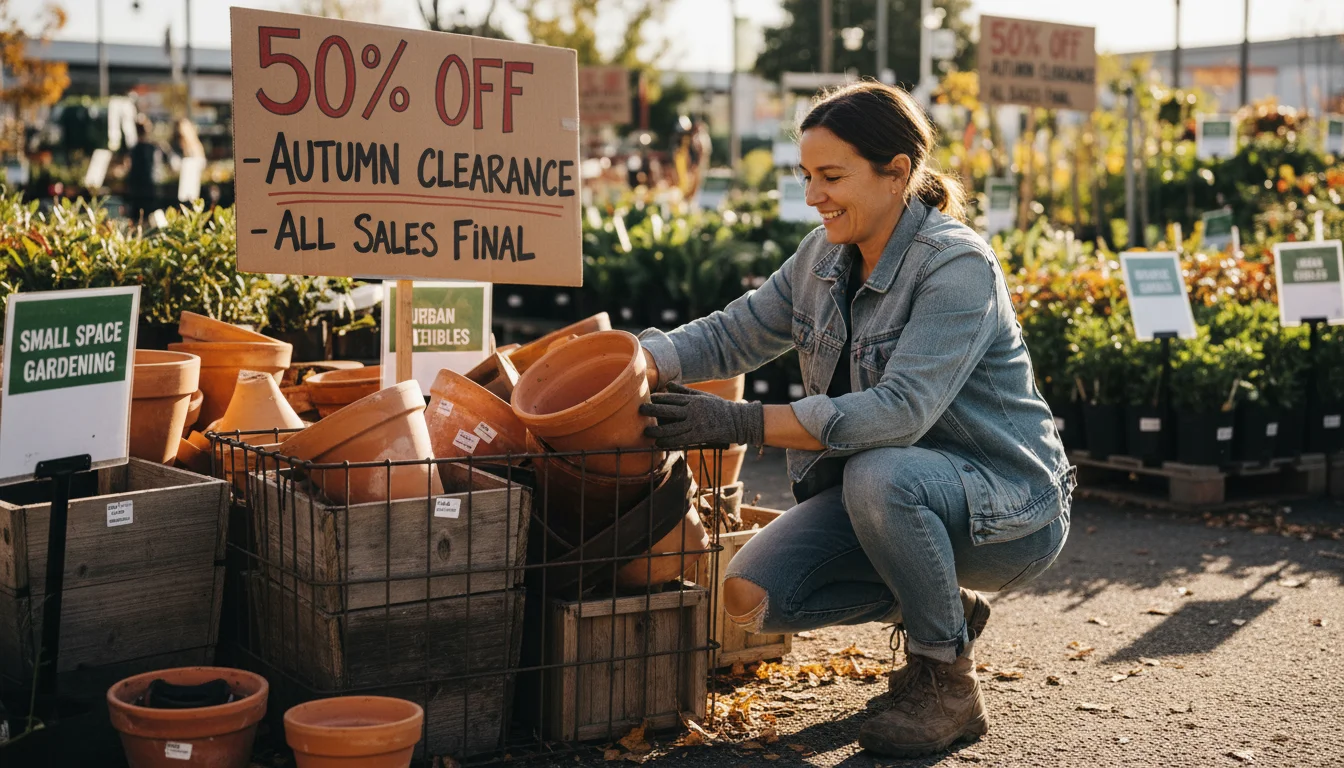
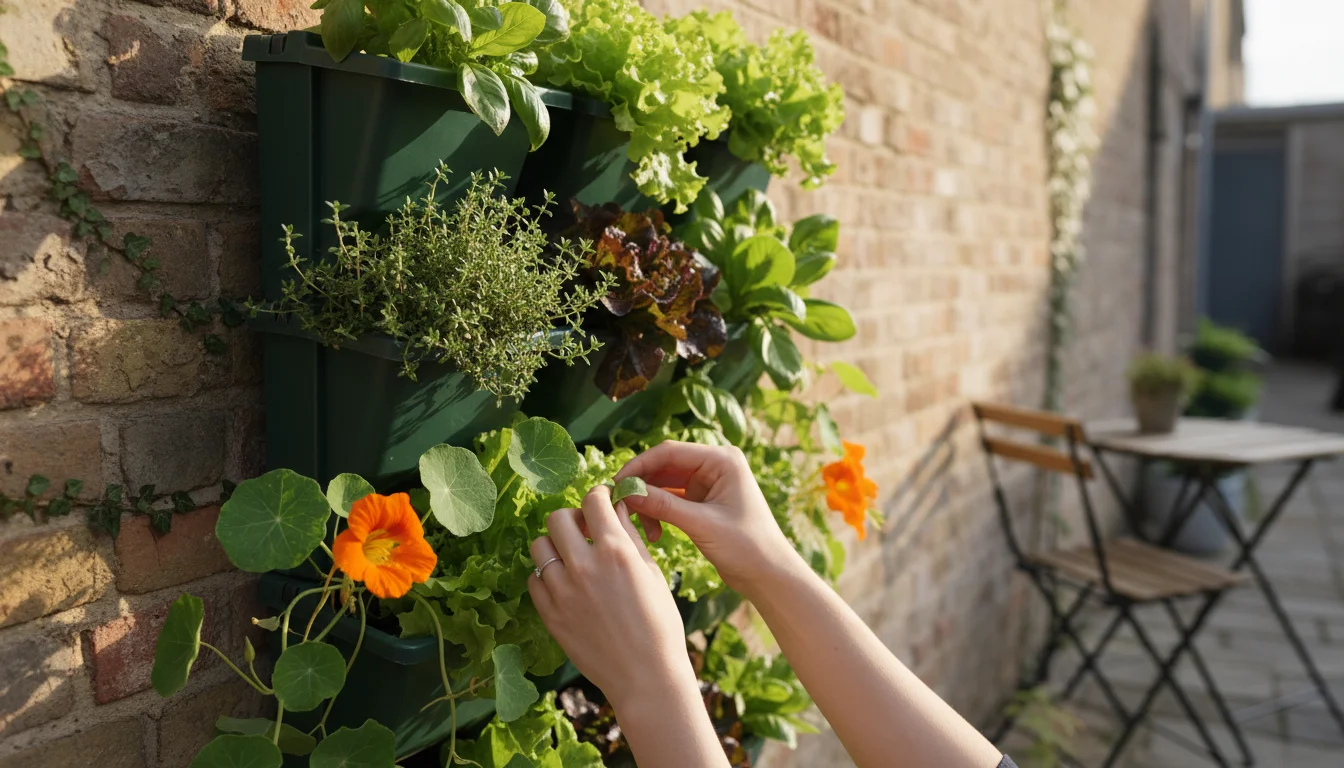
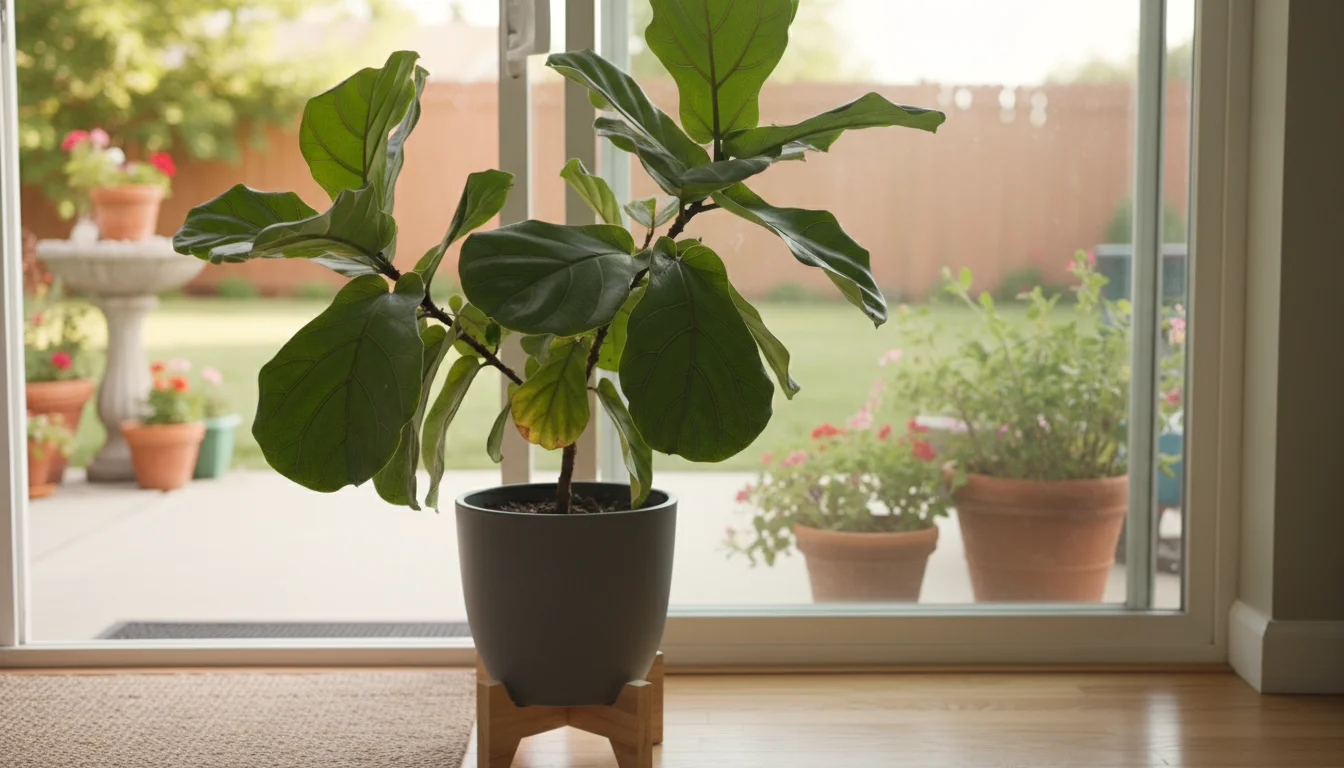

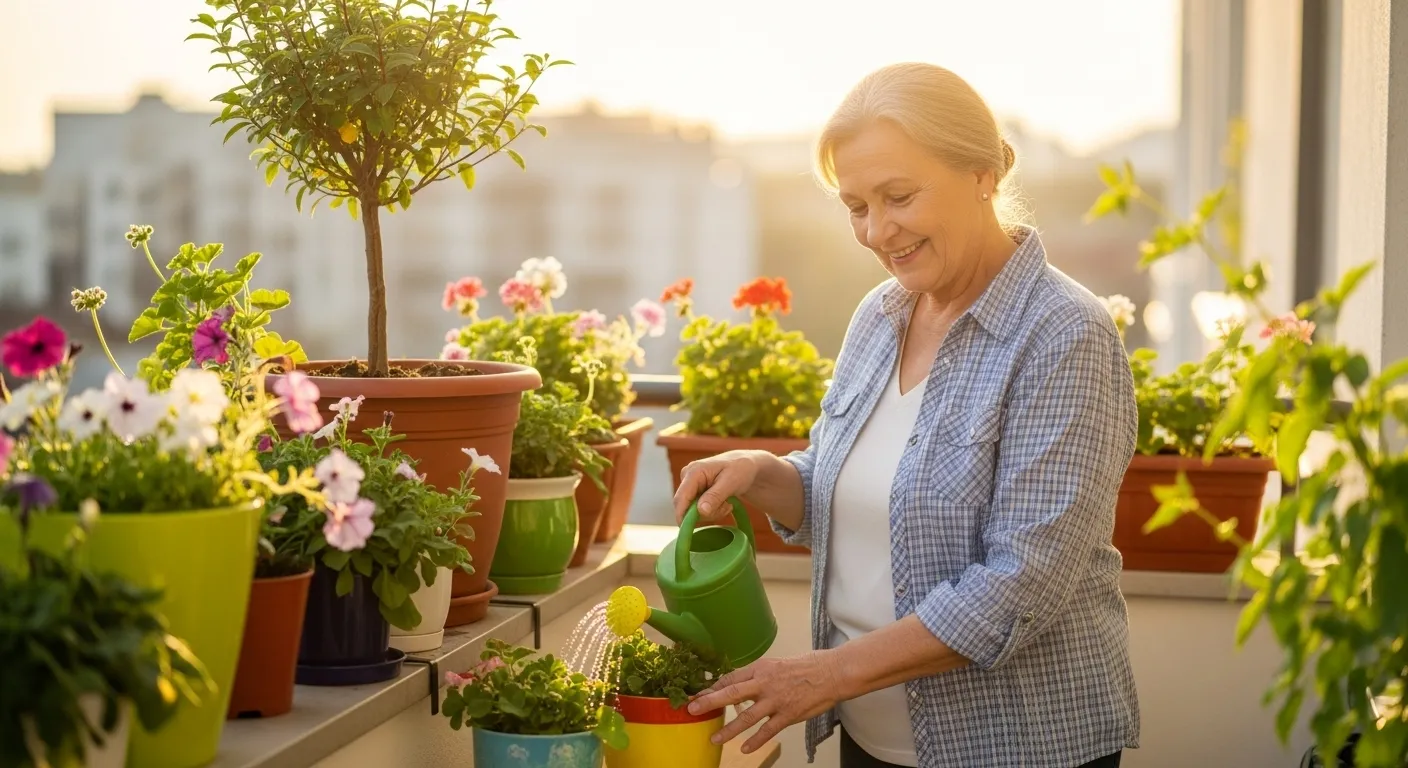
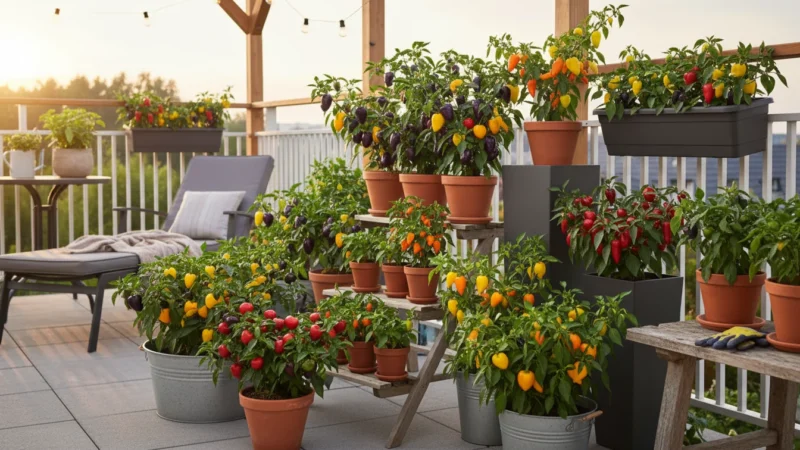
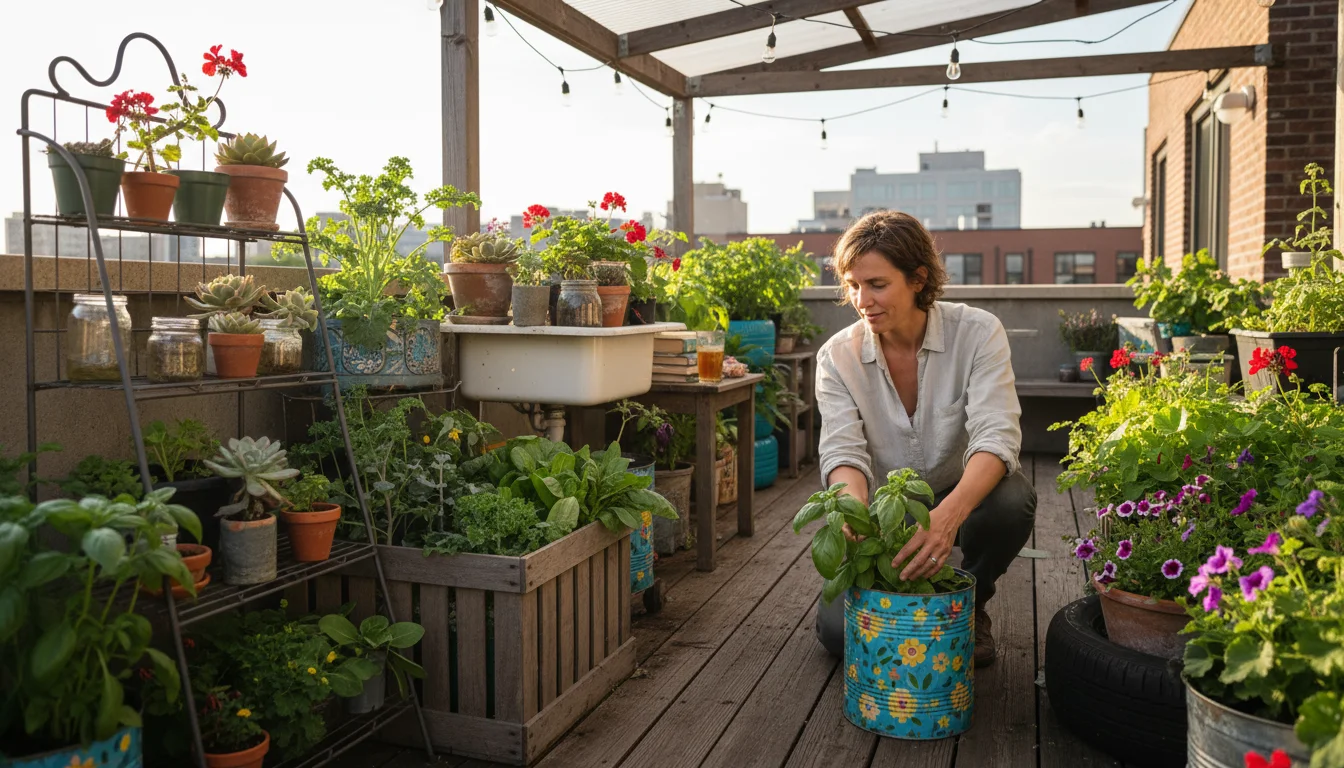
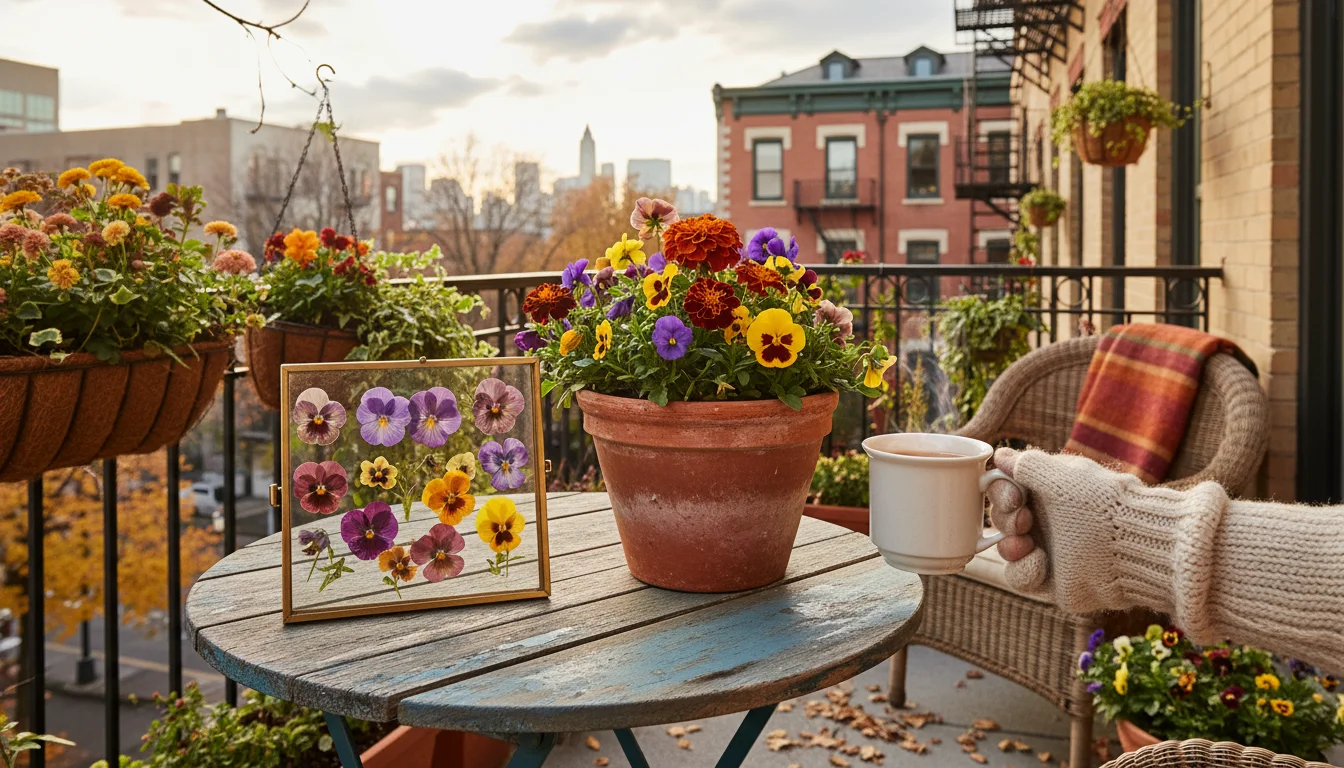
Leave a Reply